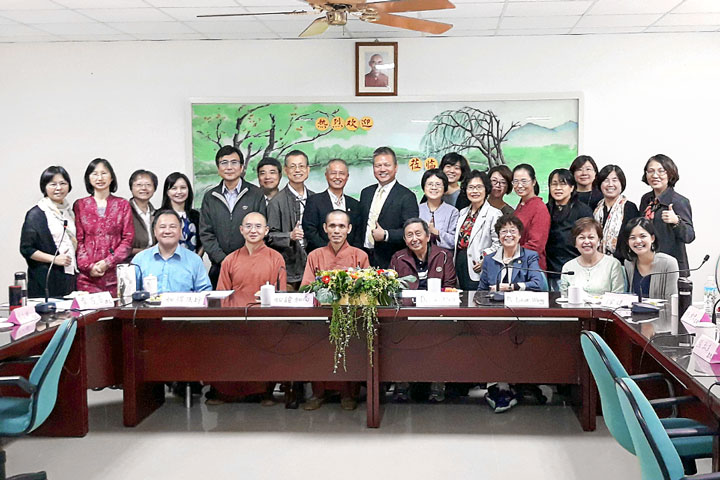
佛法與意義療法及第二波正向心理學的對話
享譽國際的意義療法(Meaning-Centered Therapy, MT)與第二波正向心理學(Second Wave of Positive Psychology, PP2.0)創建者加拿大籍 Dr. Paul T. P. Wong(王載寶博士,簡稱王博士)及其夫人 Dr. Lilian C. J. Wong 在教育部生命教育中心林綺雲執行長、高雄師範大學教育學系張淑美教授及佛光大學心理系吳慧敏教授的安排下,10/23 抵達雲林古坑福智教育園區開啟與福智僧團法師別開生面「佛法與意義療法及第二波正向心理學的對話」,與會者聽完王博士、如證和尚與如得法師的對話後,紛紛表示如同經歷一場西方心理學與佛法的高峰會談的洗禮,感覺對話的時間飛快、意猶未盡、如獲至寶,共同表達:若時間更長會更好!
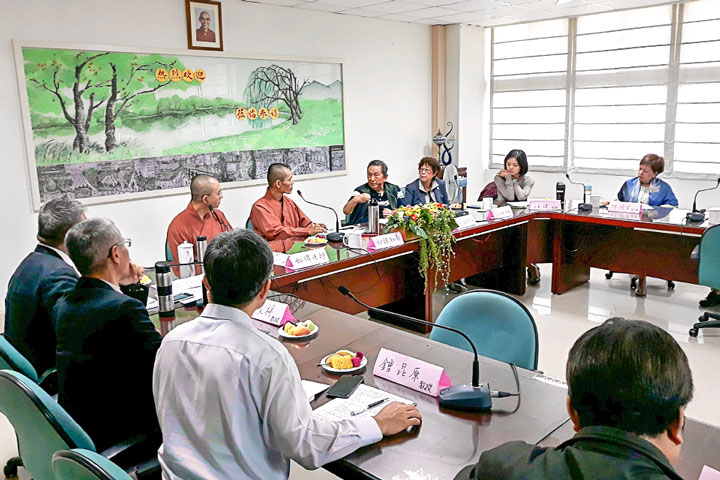
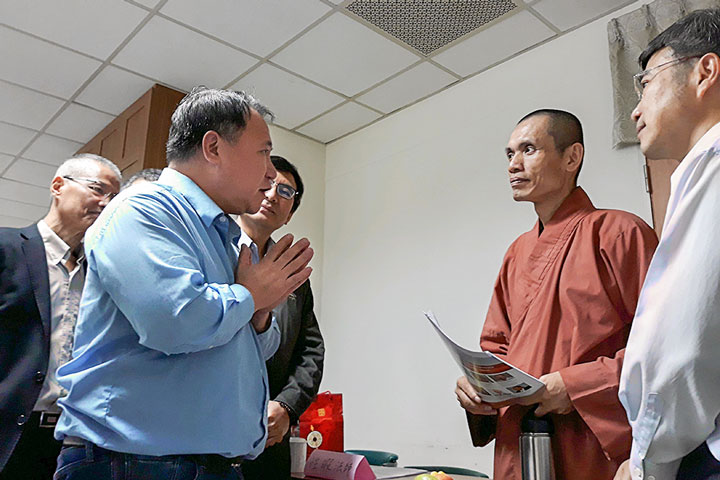
王博士首先將意義治療法及正向心理學 2.0 的內涵以 CASMAC 六個字母言簡意賅提出說明(詳附註1),修正了正向心理學 1.0 要大家只看快樂方面的引導;王博士指出因生活中本來就苦樂皆有,不去看痛苦面是有違人性、也是情感上不可能發生的悖論(Paradox)。所以王博士提出正向心理學 2.0 將之修正成為如何在面對逆境、困難與痛苦時于以「轉化」,所以要以更具意義(Meaning)、正念(Mindfulness)的心去「轉化」各種情境,內心轉向多抱持慈悲、寬恕、觀功念恩(OMAK : Observe Merits and Appreciate Kindness),及以成熟的安康(Mature happiness)的態度去看待每一個人、每一件事美好的那一面;利己害人之事不要做,多行利人又利己之事才正確,要愛人、同時也要愛自己。這是透過觀點轉移所產生的意義尋求,因為人跟人之間如果沒有愛,就如同魚沒有了水、人也將因此而失去歸屬感;所以藉所尋求的正向意義在面對逆境中轉化而成的「心理狀態」,才能從痛苦的心理狀態中走出來,在內心中得到真正的快樂,如此才符順人心。
如證和尚回饋王博士所提出之 CASMAC 有圓滿的理論與步驟、是真正修行實證的功夫,讚嘆王博士就猶如同一位修行多年的得道者。如證和尚完全認同王博士提出有痛苦時不見得沒有快樂,而是要去找尋意義、轉換痛苦感受的論點;因為當只看重快樂之引導、或忽視產生痛苦原因之追尋,是不可能得到真正的快樂的。並舉出意義療法及第二波正向心理學與佛法相共的心緒處理過程,正因為面對痛苦,認識、接受並找到苦的產生之因,當內心超越痛苦的束縛、用正確的方法進一步轉化苦難為道用時,就完全符順佛法「苦集滅道」四聖諦的內涵及「轉煩惱為道用」佛法最核心的理念。並引用加州柏克萊大學神經心理學家 Rick Hanson(瑞克.韓森)所著《簡單的事持續做就不簡單!:改變心念、發現美好,培養佛陀智慧的修鍊書》(Just One Thing : Developing A Buddha Brain One Simple Practice at a Time)一書,提出看似簡單的一件事,若能重覆做就不是件簡單的事,因為這個過程已將人人具有複雜、難以掌控的「意識心」,「轉化」成可練習、導正心念的方法了。
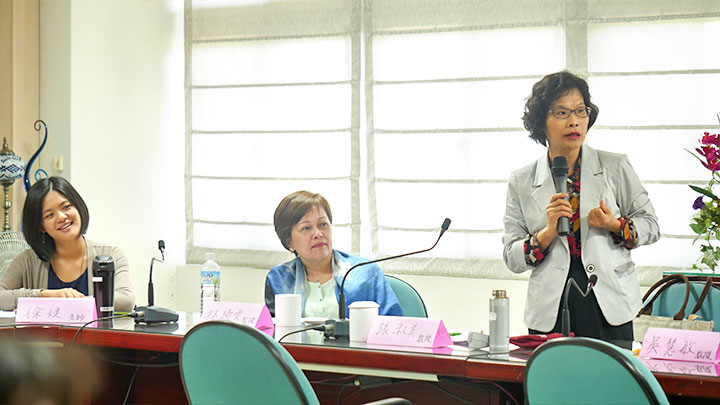
如得法師則引大乘《修心七義》根本文:「罪滿情器時,惡緣轉覺道,遇緣即修習,四行勝方便」,提出當面對苦難、如果我們能夠由其中找到價值,那苦難就變成有意義了。而金洲大師所作《調伏邊地法》中提及:「惡緣勸修善,魔鬼佛神變,病掃罪障帚,苦為法性顯」,佛法因認識苦的因來自我愛執、而非外境,因此正對治是在內心中以自他換替代我愛執,如此自己不但能承受及轉化苦難,進一步還會希求承受更大的苦難、甚至代替所有眾生受苦,透過此修煉使得人格更臻圓滿,此為佛法所闡述更深廣的觀點。
如證和尚結語時表示展開此西方心理學與佛法的對話非常有意義,希望與王博士有更多的互動與了解,透過佛法與西方正向心理學 2.0 的交流能得到相得益彰之結果。王博士若引用佛法觀點去闡釋正向心理學 2.0、詮釋高度將會有所不同;而佛法的觀點透過王博士以專業、學術論點提出,也不會被認為是宗教而心生排斥。如此心理學實證研究及佛法美好的理念、調伏煩惱的方法可以讓現代人更能接受,二者可相輔相成、交相輝映,為還被痛苦糾纏中的人們帶來一絲光明與希望。
王博士 10/23 晚上迅速在臉書上貼文回應 : 很高興我所提出第二波正向心理學 PP2.0 的介紹,得到與佛陀教授完全吻合的回應,並做了如下札記:
(1) 欣賞=發現每一刻的意義,觀察每個人的優點。
(2) 很多心理學家忽視及抑制依理論所發現的問題,是非科學的。
(3) 佛教對心理學的貢獻:正念,慈悲,接受,欣賞,無我(自我超越)。
(4) PP2.0 對佛教的貢獻:操作定義與測量,佛教概念與戒律的實證檢驗。
(5) 意義治療對佛教實踐的貢獻:提供透視轉換,重構,生活評論,重新創作,PURE(詳附註2),ABCDE(接受,信仰,承諾,發現和評估/享受),矛盾意圖,瀆職,和蘇格拉底的質疑。
感謝王博士此行提供給我們豐富的交流,同時期許我們後續有更多的機會再次與王博士進行西方心理學與佛法的對話。
主辦單位:
福智教育園區、福智佛教學院籌備處、國立高雄師範大學教育學院
協辦單位:
教育部生命教育中心、高雄師大教育學系成教所、文藻外語大學人文教育學院、南華大學、佛光大學心理系、高雄醫學大學正向心理學中心、台灣國際生命意義與教育與輔導學會籌備委員會
Dialogue between Buddhism and Meaning Therapy and the Second Wave of Positive Psychology.
The founder of Meaning-Centered Therapy (MT) and the Second Wave of Positive Psychology (PP2.0), Dr. Paul T. P. Wong, and his wife Dr. Lilian C. J. Wong visited the Bliss and Wisdom Educational Park (BWEP) in Gukeng Township, Yunlin County, Taiwan on 10/23, along with Professor Chi-Yun Lin, Executive Director of the Life Education Center of the Ministry of Education, Professor Sue-May Zhang of the Department of Education of Kaohsiung Normal University and Professor Huei-Min Harriet Wu of the Department of Psychology of Fo Guang University. After the discussion between Dr. Wong, Venerable Ru Zheng, and Venerable Ru De, the participants all expressed that the meeting was like experiencing the baptism of a summit meeting between western psychology and the Dharma teaching.
Dr. Wong first introduced the Meaning Therapy and the Positive Psychology 2.0 content with the six letters CASMAC (Note 1), and by discussing how he amended the Positive Psychology 1.0, which only saw the happy side. Dr. Wong pointed out that because life is always a mixture of bittersweet experiences, to not look at the painful side is not only a violation of human nature, but also an emotionally impossible paradox. Therefore, Dr. Wong proposed that Positive Psychology 2.0 should be amended to become "a transformation" in the face of adversities, difficulties, and suffering to another mind state. The inner mind should cultivate an attitude of being compassionate, forgiving, appreciative of kindness, and OMAK (Observe Merits and Appreciate Kindness) by treating everyone and every situation with mature happiness, and loving others and yourself at the same time. In this way, the mind will be more meaningful and mindful in various situations. This is what one can accomplish through a change in perspective, because if there is no love between sentient beings, it is like a fish out of water, and one would therefore lose one's sense of belonging. In the face of adversity, seeking positive meaning can transform the painful state of mind to a truly happy "psychological state".
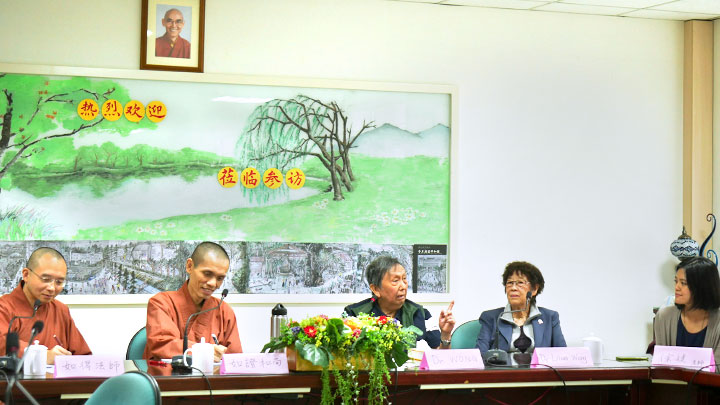
Venerable Ru Zheng indicated that Dr. Wong's explanation of CASMAC's theory and process are very complete, and is a real empirical practice. Venerable Ru Zheng praised Dr. Wong as an experienced practitioner, and fully agreed with Dr. Wong's proposition and argument that there is no lack of happiness in suffering. The key point is to find the meaning and to transform the feeling of pain, because if one is inclined to see happiness as the only solution or neglects to find the causes of suffering, it is not possible to find true happiness. The Meaning Therapy and the Positive Psychology 2.0 and the Dharma teaching share a commonality. Because of these approaches, transforming the mind state by facing the pain directly and understanding it, one can accept and find the cause of suffering. When the spiritual mind goes beyond the shackles of pain and proceeds with the correct method of accepting suffering as the process of cessation, it will completely coincide with the content of The Four Noble Truths (namely: suffering, origination, cessation, and path) and the Dharma teaching of “transforming afflictions into practice”, which is the core value of Buddhism. The Venerable also mentioned neuropsychologist Rick Hanson's book, Just One Thing: Developing A Buddha Brain One Simple Practice at a Time, in which he suggested that a seemingly simple matter, if repeatedly done, would not be a simple matter anymore, because this process attempts to transform one's complex and hard-to-control consciousness into a habit of mindfulness.
Venerable Ru De quoted from a Mahayana classic, The Seven Cultivation of Hearts, the basic text: “When the mind is filled with sin, the evil turns into an awakened path and will focus on practice. The four practices are methods.” While facing suffering, if we can find the value underneath, then suffering would be meaningful. And the Great Elder Ser-ling-ba, in his “Regulation of Involuntary Resettlement Act” mentioned: “When facing non-virtuous forces, practice virtues; it may be bad causations, but is actually Buddha in disguise. What is minor sickness will eliminate large sins; though it is suffering, it will display Buddha's teaching”. Because the Dharma teachings recognize that suffering comes from “the focus of the self”, and not from external forces, therefore, the remedy is to substitute “the self” for “the others”. In this way, not only can you change and transform suffering, furthermore, you can aspire to withstand even larger sufferings, and even endure the sufferings of all sentient beings. Through this practice, it will enable one's personality to be even more well-rounded. The Dharma teaching goes even further and broader in explaining this point.
Venerable Ru Zheng concluded that starting the dialogue between Western psychology to include the Dharma teaching is very meaningful, that he hopes to have further exchanges with Dr. Wong between the Dharma teaching and western positive psychology, and that these exchanges can complement each other. If Dr. Wong uses the Dharma teaching perspective to explain positive psychology, the interpretation would be different. Through Dr. Wong's specialty and academic perspective, it would not be considered religious, and therefore, allow the mind to be more objective. In this way, the empirical research of western psychology and the beautiful concept of the Dharma teaching will allow today's generation to accept it as a method to adjust their afflictions; the two can be mutually compatible, and reinforce each other so that they can bring a bright light of hope to those who are in the midst of suffering.

Dr. Paul T. P. Wong posted at his FB on 10/23:
Pleased that my PP2.0 presentation was very well received as consistent with Buddhist teaching.
(1) Appreciation = Discover the meaning of each moment & observe the merits of each person.
(2) It's so unscientific that so many psychologists ignore & suppress findings question that theories.
(3) Contributions from Buddhism to psychology: Mindfulness, compassion, acceptance, appreciation, non-self (self-transcendence).
(4) Contributions from PP2.0 to Buddhism: Operational definition & measurement, empirical tests of Buddhist concepts & precepts.
(5) Contributions from meaning therapy to Buddhist practice: Providing interventions, such as perspective shift, reframing, life review, re-authoring, PURE (Note 2), ABCDE (Acceptance, Belief, Commitment, Discovery and Evaluation / Enjoyment), paradoxical intentions, dereliction, & Socratic questioning.
https://www.facebook.com/PaulTPWong/posts/10155668377786280
Note : (By Dr. Paul TP Wong)
1. PP2.0 framework for research and practice:
(1) How can we find happiness or wellbeing in a world of suffering?
(2) The absence of suffering does not meaning happiness; similarly, the presence of suffering does not meaning unhappiness, In fact, mature happiness depends on both the transformation of suffering and the cultivation of happiness. Thus, PP2.0 introduces a new construct to happiness research.
(3) Mature happiness is a mental state of peace and harmony based on spiritual or psychological maturity.
(4) Suffering is not something to be deducted from one's overall wellbeing, but a plus factor as mature happiness. The new algebra 4 + (-2) = 6.
(5) Thus, fear of death or fear of failure can be transformed through meaning and contribute to one's positive motivation and wellbeing.
(6) Wellbeing = Courage, Acceptance, Self-transcendence, Meaning, Appreciation, Compassion (or CASMAC)
(7) Intervention = Daily practice of the above principles thru the cultivation of one's spirituality, intellect, compassion and relationships.
2. Dr. Wong has developed the PURE model as a framework for individuals to discover and create meanings for their lives. This is basically a self-regulatory model, which allows trials and errors and constant adjustments to align actions to one's core values and life calling. The “P” stands for purpose and life goals, “U” stands for understanding the demands of each situation and life as a whole, “R” stands for responsible actions and reactions consistent with one's purpose and understanding, and lastly, “E” represents the constant need for evaluation to ensure authenticity and efficacy. The PURE model has been effectively applied to counseling and coaching.
Organizers:
The Bliss and Wisdom Educational Park,
The Bliss and Wisdom Buddhist Institute Preparatory Office,
The Department of Education of Kaohsiung Normal University
Co-organizers:
The Life Education Center of the Ministry of Education,
The Department of Adult Education of Kaohsiung Normal University,
The institute of humanistic education of Wenzao Ursuline University of Languages,
Nanhua University,
The Department of Psychology of Fo Guang University,
The Positive Psychology Center for Kaohsiung Medical University,
International Network on Personal Meaning, Taiwan Preparatory Committee
延伸閱讀:
● 關心眾生身心健康,福智與國際心理學專家對話
● 福智「觀功念恩」躍上國際個人意義研討雙年會,向西方學者介紹理論和實踐
